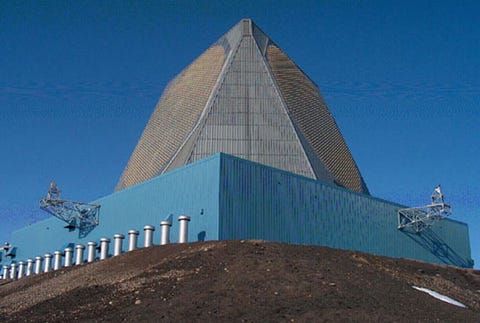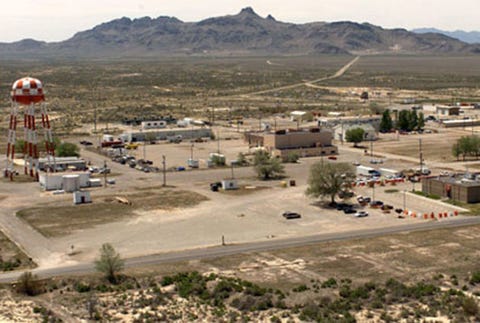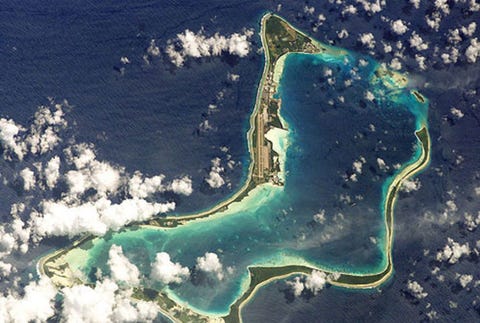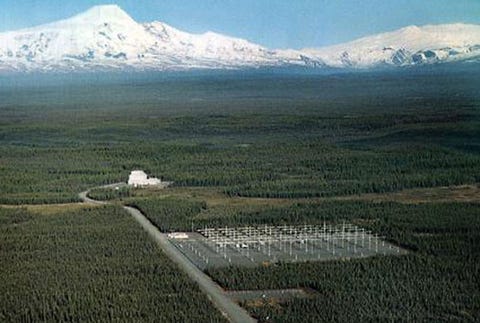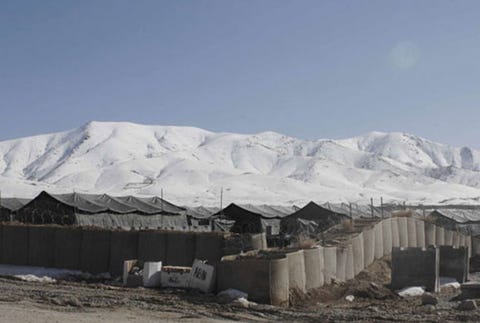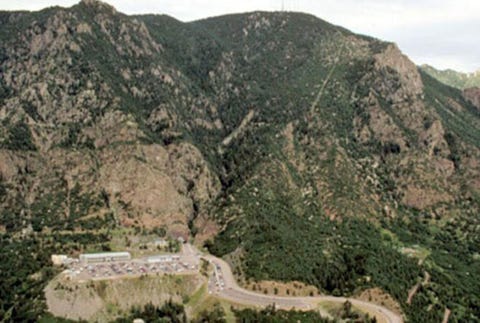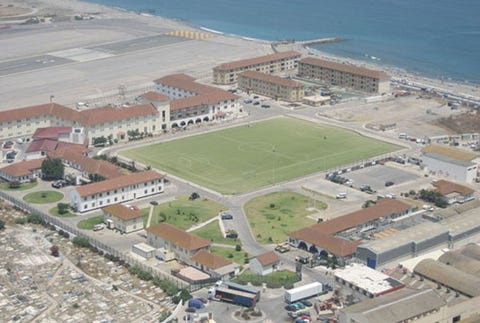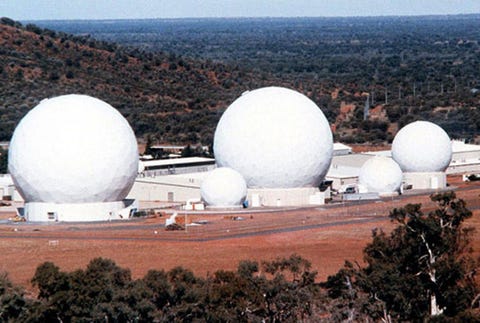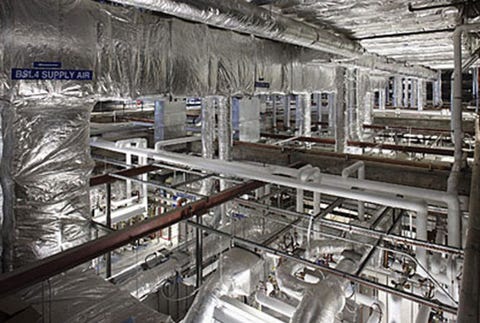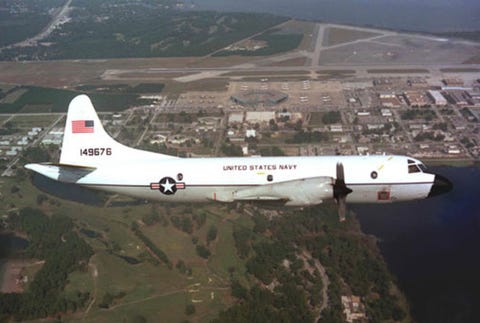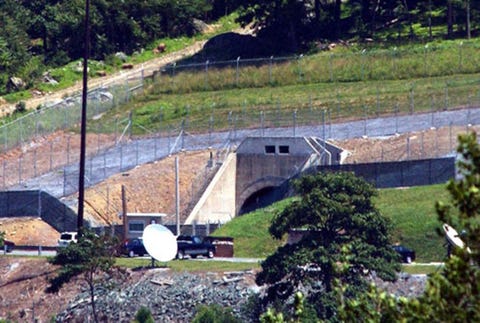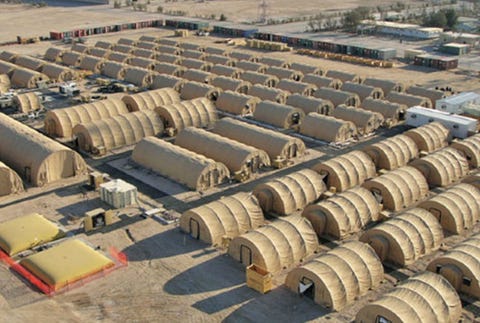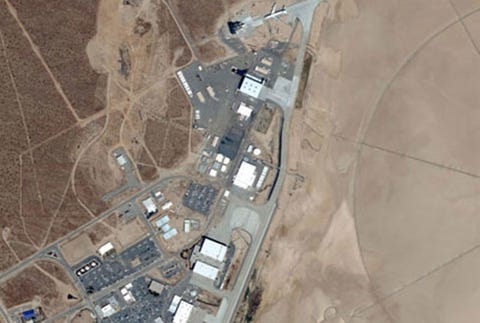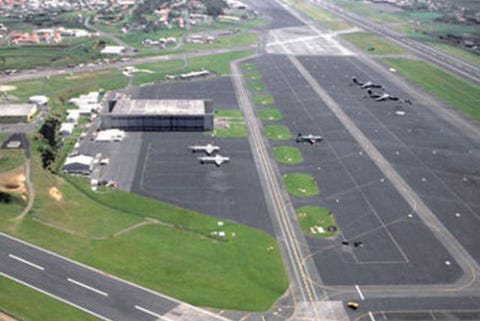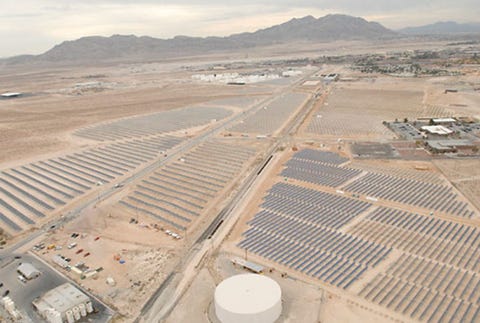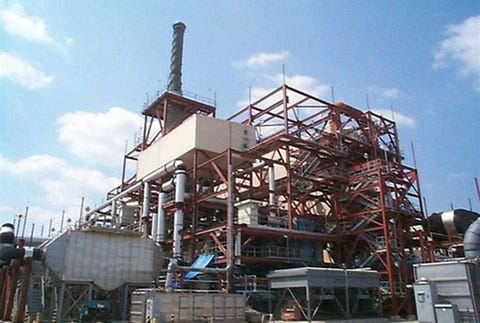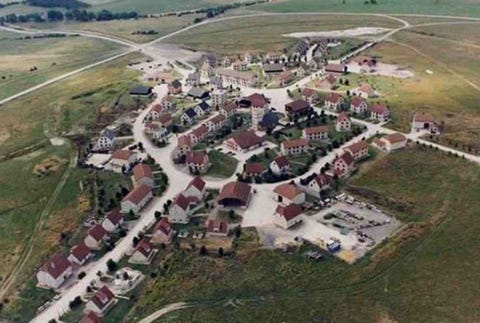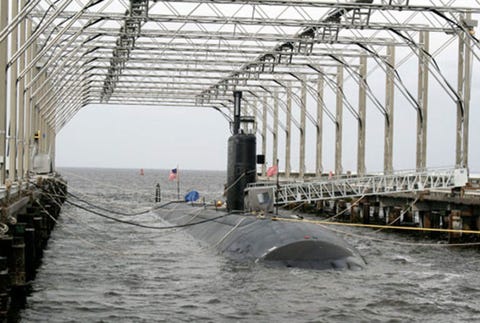
The World's 30 Strangest Military Bases
The world's hodgepodge of military bases run the gamut from hazardous mountaintop forts to seemingly impenetrable underground bunkers. Then there are bases on remote islands tracking objects in deep space and high-tech laboratories probing the most lethal microbes in existence. The design of a base needs to address the immediate needs of a military while still being versatile enough to remain useful as threats and technology evolve. We tracked down some of the most interesting active military facilities and spoke with Brad Schulz, vice president of federal architecture at HNTB, about why they're notable.
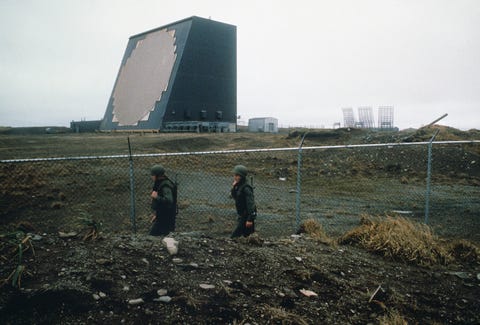
Location: Shemya, Aleutian Islands
Background: Used as a ballistic missile radar home in the 1970s, the outdated system is still in use while the airstrip serves as an active emergency landing zone.
How It’s Unique: Well, first off, the location 1,200 miles west of Anchorage, Alaska, and only 200 miles east of Russia on the island of Shemya in the Aleutian Islands gives this desolate location some intrigue. From there, the United States put the Cobra Dane ballistic missile radar on the island in the 1970s and while outdated now, is still in use, with some reports saying the system is now watching North Korean airspace. Also used as a refueling station and emergency runway, Eareckson’s varied uses come in quite handy in the north Pacific.
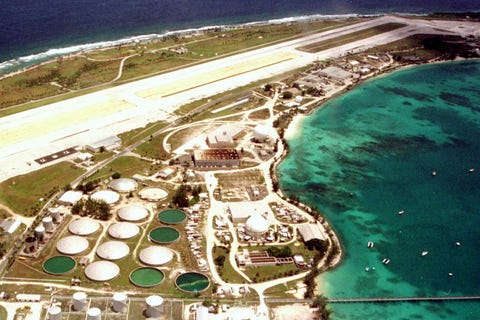
Location: Marshall Islands
Background: One of the largest coral atolls in the world, the United States placed a base there during World War II.
How It’s Unique: Apart from the massive amounts of coral, missiles make up another major portion of this Pacific atoll. The Kwajalein Atoll offers a test site for radars, tracking devices, missile launchers and plenty of other technology. The U.S. leases 11 of the 97 small islands that make up the atoll and surround a central lagoon perfectly suited for reentry of airborne items. The out-of-the-way site helps with plenty of testing of all sorts free of ship and radio traffic.
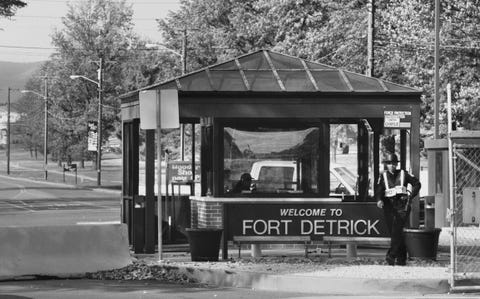
Location: Frederick, Maryland
Background: What started as Camp Detrick in the 1940s quickly turned into a long-standing home for the U.S. military.
How It’s Unique: Farms in Maryland joined together as Fort Detrick, the site of the United States’ biological weapons program, meaning the 1942 creation of this program, developed soon after the Pearl Harbor attack, was home to some wild experiments of biological toxins and plenty of other things we simply don’t want to know about.
Using creations from the scientists at the fort, the US Navy ran six experiential attacks on San Francisco, sending ships just off the shore of the U.S. city to release simulants into the air. Once the warfare program was ended in 1969, the site turned into the home of the US biological defense program.

Location: Norway
Background: Originally constructed as a Cold War naval base, when Norway sold the site it was eventually leased to the Russians, who use the space for “research.”
How It’s Unique: Along with the Norway versus Russia backstory that started the site, which has flipped to Russia now operating ships and planes within Norway, the location itself offers quite a site. Chiseled into mountains, the base includes buildings, bombproof areas within the earth and docks aplenty.
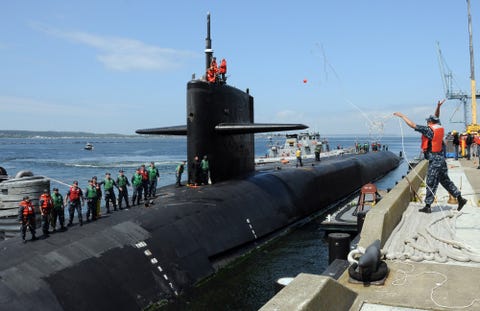
Location: Washington State
Background: A small island off the coast of Washington State, the U.S. Navy purchased land on Indian Island in 1939. It has serviced naval ships as the last stop before the Pacific Ocean ever since, most recently named Naval Magazine Indian Island, one of the smallest bases in the Navy.
How It’s Unique: The final remaining deep-water ordnance facility on the West Coast without access restrictions, the small island helps ships — as large as Nimitz class aircraft carriers — load and offload ammunition. The site has more than 100 “magazines” for weapon storage, located underground in domed mounds. Every ship leaving the Northwest region gets supplied by the island that has the ability to service everything from US Coast Guard patrol boats to submarines to aircraft carriers.
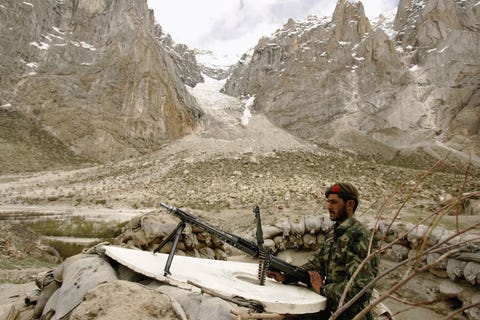
Location: India and Pakistan
Background: India and Pakistan have long disputed the ownership of the Siachen Glacier, also a four decade-plus home of the Indian Army
How It’s Unique: Located at over 21,000 feet, the Siachen Glacier isn’t your run-of-the-mill military outpost. High in the mountains north of Jammu and Kashmir, both India and Pakistan have disputed the site, although the Indian Army has a base and controlling interest of two of the main mountain passes. With windstorms, snowstorms, thin oxygen and frigid temperatures, not only is the site expensive to operate but also costly in terms of human sacrifice.

Location: Virginia
Background: The public first heard about this top-secret site now run by the Department of Homeland Security in 1974, but it has operated for longer than that, with weather history dating to the 1800s and uses during World War II.
How It’s Unique: The history of Mount Weather has an ample shroud of intrigue, with an origin story largely unknown. While it was born as a weather station in the 1800s and then became a camp during World War II, the underground portion of the facility was likely done around 1960 and a training ground created around 1980. In more recent times, the Department of Homeland Security has run the subterranean facility and it has served as an operations center, housing high-level government officials during emergency times, such as then-Vice President Dick Cheney during the 9/11 attacks of 2001.
Also home to the FEMA National Radio System, the Blue Ridge Mountains site was not widely known until a plane crash in 1974 near the site brought the public’s attention to its location when reporters were not allowed near it.
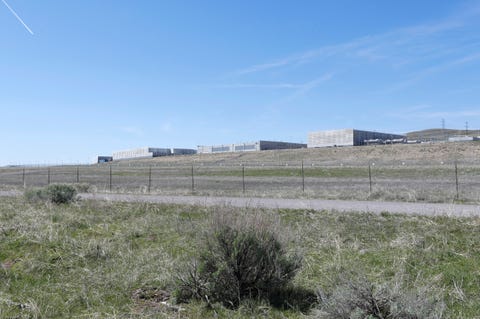
Location: Bluffdale, Utah
Background: The $2 billion facility opened in 2013 to operate as a one million square foot spy center storing oceans of data.
How It’s Unique: Basically a giant server farm, these servers are all things spy. Used to monitor Internet traffic and store five zettabytes of data, the location away from major cities in Utah on Camp Williams property between Utah Lake and the Great Salt Lake creates a fresh approach to military sites.
KeyBank provides capital solutions for affordable housing projects. See how they’re improving communities and changing lives.

Location: North Carolina
Background: The former 1940s military site took on a new identity weeks after the Bay of Pigs invasion in 1961. It turned into a weapons testing facility and was also used as a training ground and spy school.
How It’s Unique: Most known for the Osama Bin Laden house mockup built on site for training for the Navy SEALs, Harvey Point — the facility is tucked behind security fences and Spanish moss-laden cypress trees — has served as a CIA site for decades, cloaked in classified veils. As more people start to spill the secrets of Harvey Point, its use as not only a weapons testing facility but also a training facility has come to light, with everyone from the CIA, FBI, SEALs and counter-terrorism units the world over going through the site.
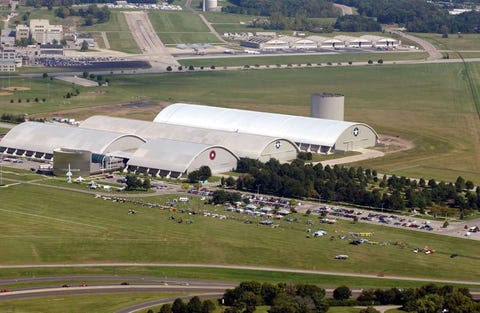
Location: Dayton, Ohio
Background: In operation since 1917, the facility saw rapid growth around World War II.
How It’s Unique: Reverse engineering always sounds so cryptic. The Wright-Patterson Air Force Base outside of Dayton, Ohio, has been reverse-engineering aircraft for much of its 100-year history, especially during the Cold War. Add in the fact that Hangar 18 has a tie to the Roswell crash and conspiracy theorists enjoy the intrigue—and strangeness—of Wright-Patterson.
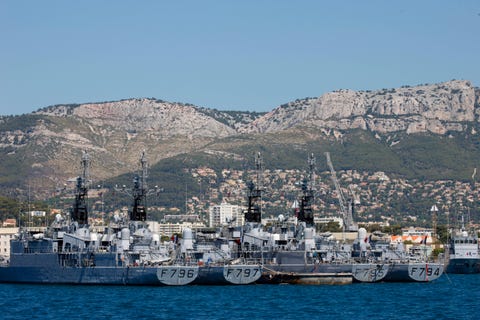
Location: Toulon, France
Background: The location first became a port under Louis XII in 1514. An arsenal was added in 1599 and updates have occurred ever since.
How It’s Unique: The first naval base in Europe and now the home to more than 70 percent of France’s navy, the arsenal on the east coast has continued to grow and evolve over the centuries. The site built the country’s first iron ships and world’s first modern submarines.
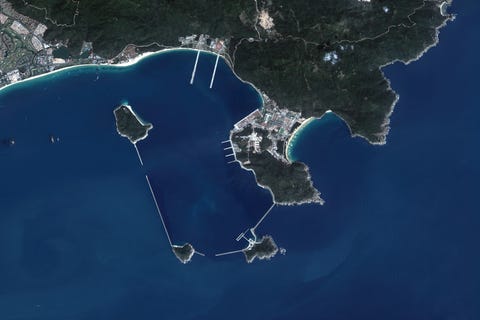
Location: Hainan Island, China
Background: Likely constructed at some point during the 2000s, the Chinese have turned caverns into a naval base able to hold nuclear submarines.
How It’s Unique: The Chinese have taken a resort island and turned underwater tunnels into an entrance to an underground naval base. This underwater naval base, using technology popular in the mining and petroleum industries, allows submarines to enter the leave without detection, turning caverns and harbors into homes for dozens of nuclear submarines.
Location: Qaasuitsup, Greenland
Background: Thule Air Base sits within 800 miles of the Arctic Circle, making it the northernmost U.S. military installation. Among the many challenges posed by the region's climate is that the base's port is only accessible for three months each year, so major supplies need to be shipped during the summer. The base may be frozen and remote, but the 12th Space Warning Squadron operates an early warning system for Intercontinental Ballistic Missiles from Thule, while the 21st Space Wing is in charge of space surveillance operations.
How It's Unique: Brad Schulz, vice president of federal architecture at HNTB, who recently worked on a dormitory replacement project at Thule, explains that construction crews essentially need to build on the most stable layer of permafrost they can get to. With temperatures dropping below minus-60 F, keeping troops warm is crucial. One of the more interesting weather-specific features is that all of the utilities are above ground, because it would be too hard to quickly access them if something went awry. "You don't bury any waterlines, communication lines or even sanitary lines," Schulz says. "They're all insulated and triple-heat-taped." Schulz also notes that all the buildings on the base are equipped with so-called arctic vestibules, which provide 24/7 access to shelter while ensuring the buildings remain secure.
Location: Great Salt Lake Desert, Utah
Background: Within two months of the attack on Pearl Harbor, President Franklin D. Roosevelt set aside the first 127,000 acres of Dugway Proving Ground in Utah's Great Salt Lake Desert. Over the past 60 years, the site has expanded to nearly 800,000 acres, roughly the size of Rhode Island.
How It's Unique: Dugway's massiveness allows it to be the premiere site for testing defense systems against chemical and biological weapons, as well as military-grade smoke bombs. During World War II, the facility played a vital role in the development of incendiary bombs. In order to test the fire-causing weapons, crews at Dugway built replicas of German and Japanese villages, even going so far as to fill the model buildings with furniture that would be similar to that found in the respective country. Today, the remains of the German village are eligible to be included on the U.S. National Register of Historic Places.
Location: Diego Garcia BIOT, Chagos Archipelago
Background: This joint U.S. and U.K. operation is situated on a tiny atoll about 1000 miles from India and tasked with providing logistical support to forces in Afghanistan and Iraq.
How It's Unique: "There's a certain amount of logistical difficulty" with ultra-remote facilities like Diego Garcia, Schulz says, and shipping materials can be costly. Diego Garcia's remoteness, though, allows it to be a key hub for tracking satellites, and it is one of five monitoring stations for GPS. Additionally, the island is one of only a handful of locations equipped with a Ground-based Electro-Optical Deep Space Surveillance system for tracking objects in deep space. As an atoll, the land itself is rather oddly shaped, too. From end to end, Diego Garcia is 34 miles long, but its total area is only 11 square miles.
Location: Gakona, Alaska
Background: HAARP, or the High-Frequency Active Auroral Research Program, is a collaborative project involving the U.S. Air Force, the U.S. Army and the University of Alaska. Researchers at the facility use a powerful high-frequency transmitter and an array of 180 antennas to temporarily disrupt the ionosphere in hopes of yielding potential communications and surveillance benefits.
How It's Unique: HAARP has been the centerpiece of countless conspiracy theories, ranging from rumors that it will be used for mind control to claims that it can manipulate the weather of individual countries. The project's website says that the equipment can only function properly if it is located in the auroral region, and Alaska happens to be the only U.S. state that fits that criterion. A quiet electromagnetic location is needed for the system to operate, which further explains the removed location of HAARP. In past interviews, HAARP's operators readily admit they're researching potential defense applications. HAARP is not classified.
Location: Siachen Glacier, Kashmir:
Background: For more than 25 years, India and Pakistan have been battling for control of the nearly 50-mile-long Siachen Glacier. Both sides have set up military installations in the imposing Karakoram range, where 3-mile-high mountain peaks are the norm.
How It's Unique: Troops stationed in this barely inhabitable war zone face endless peril. While a 2004 ceasefire has been adhered to, soldiers on the world's highest battleground still fight altitude sickness, deadly temperatures and bone-crushing avalanches. There are no precise figures on how many lives have been lost during the conflict, but some estimates put the death toll as high as 5000, many of which are attributed to climate-related events. Due to the lack of infrastructure in the region, helicopter pilots are placed in harm's way as they navigate unpredictable winds and poor weather to delivery basic necessities.
Location: Cheyenne Mountain Complex Air Force Station, Colo.:
Background: This iconic underground base has been inspiring science fiction writers and awing engineers since 1966. Located nearly a half mile under a granite mountain, the labyrinthine facility is run by Air Force Space Command. The base earned its place in pop culture when the television version of Stargate made Cheyenne Mountain the HQ of cosmic time travel.
How It's Unique: One-of-a-kind bases like Cheyenne pose countless construction challenges and need to satisfy seemingly impossible requirements, like being able to withstand multi-megaton attacks. "It would be hard for a contractor to bid a project like this, because you might be using new construction techniques, new construction technology," Schulz says. Aside from sitting under a mountain of granite, an extremely hard rock, the base is protected by 25-ton blast doors, and some rooms sit on massive beds of springs to better absorb a blast. "It's certainly not a very secret installation, but it's well-protected."
Location: Gibraltar:
Background: Certain geographic locations will never lose their strategic importance. Case in point: Gibraltar. British control of the territory dates back to 1713, when Spain ceded the land in the Treaty of Utrecht. Nowadays, the Royal Gibraltar Regiment watches over the territory from its Devil's Tower Camp headquarters.
How It's Unique: The location's strategic importance stems from the Strait of Gibraltar, which joins together the Atlantic Ocean and the Mediterranean Sea, but the area also provides unique training opportunities in parachuting, diving and tunnel warfare. Under the streets of Gibraltar is an extensive 35-mile-long tunnel system carved through limestone. On the southern tip of Gibraltar is the Buffadero Training Center, which includes two live firing ranges, an obstacle course and a mock village that mimics warfare in an urban environment.
Location: Lingiari, Australia
Background: Near the hot, desolate center of Australia, just outside of Alice Springs, is the Joint Defence Space Research Facility Pine Gap. Australia and the U.S. agreed to build the compound in 1966, but desert flooding, blistering heat and a lack of paved roads slowed initial construction efforts. The site officially opened in June 1970 and has been a joint U.S./Australian operation since.
How It's Unique: Pine Gap's collection of eight or so radomes and its remote location have sparked many UFO-related rumors, both in Australia and abroad. The main function of Pine Gap is to monitor any missile activity in the region and relay intelligence to U.S. and Australian forces. Schulz points out there are certain military installations, like Pine Gap or HAARP, that can only operate effectively in certain geographical areas. "Even though they're in terrible environments, some portion of that land is strategically important," he says. In 2009, the Australian Department of Defence announced plans to upgrade antiquated equipment at the facility, indicating that Pine Gap has a long future ahead of it.
Location: Fort Detrick, Md.
Background: Anthrax, Ebola virus, plague and monkeypox are just a few of the deadly microbes handled by researchers at the U.S. Army Medical Research Institute of Infectious Diseases, commonly known as USAMRIID. Over the years, the institute has made significant contributions to the development of vaccines, diagnostics and treatments that have both military and civilian applications.
How It's Unique: USAMRIID is the only Biosafety Level 4 (BSL-4) laboratory under the purview of the Department of Defense. Facilities like these are all about redundancies, Shulz says, and the safety requirements needed for BSL-4 certification are extensive and complex. A few of the more notable precautions include double-door airlocks, sophisticated filtration systems capable of catching microscopic particles, fumigation chambers and a completely air-tight building. According to the National Institutes of Health, many of the BSL-4 facilities build buffer corridors around the laboratories to help mitigate damage from any potential blasts.
Location: Jacksonville, Fla.
Background: The new Hangar 511 at Naval Air Station Jacksonville is the largest hangar in the Navy's inventory, capable of storing 33 P3-C Orions, four C-130 Hercules and a helicopter unit. In the coming years, the hangar will be instrumental in housing the P-8 Poseidon and its 120-foot wingspan.
How It's Unique: Hangar 511 is one of only three hangars, military or civilian, to achieve LEED Silver certification. Schulz says HNTB fitted sections of Kalwall—a translucent, polymer panel—into the southern wall so natural light could illuminate the hangar and curb energy consumption. The designers also avoided using conventional sliding hangar doors and opted for Megadoors, which are made from fabric and pulled vertically, similar to blinds in a bedroom. "It has, I think, the largest fabric hangar doors ever constructed," Schulz says. "There are two of them that are 60 feet tall by 450 feet long. The truss that spans that 450 feet is 15 feet wide and 35 feet tall. Those are very interesting pieces of equipment."
Location: Adams Country, Penn.
Background: This notoriously cryptic facility is built under Raven Rock mountain near the border of Pennsylvania and Maryland. The site was birthed during the Cold War and goes by many names, including Site R and the underground Pentagon.
How It's Unique: Site R's mission is to facilitate the Continuity of Operations Plan, a blueprint for how the government would reposition itself if a major catastrophe strikes. Should the country find itself in peril, defense communications and planning will allegedly be handled here, but the utility of such a strategy has been hotly debated. Not too far away, in Virginia, is Mount Weather Emergency Operations Center, which is the FEMA-controlled, civilian-centered counterpart to Site R. "Everyone knows it exists, but I would say folks are probably not aware of its complete function," Schulz says.
Location: Iraq and Afghanistan
Background: Temporary Deployable Accommodations, or TDAs, are the brainchild of global engineering firm KBR. These on-the-fly facilities can be large enough to host 600 troops and take less than a month to set up.
How It's Unique: Each eight-man tent is built from PVC-barrel cover and a composite insulation liner. Air conditioners help U.K. and U.S. forces counter the sweltering heat of the region. Andrew Jeacock, a marketing director for KBR, boasts that the real tech gems of a TDA are its vacuum waste-distribution system and the waste-water treatment plant. The filtration system is so effective, Jeacock says, that it renders waste water nearly potable. For next-generation TDAs, KBR is looking for ways to improve fuel and water efficiency.
Location: Edwards, California
Background: America's first jet, the Bell P-59, made its debut flight on Oct. 1, 1942 at Muroc Dry Lake, now known as Edwards Air Force Base. A mere six years later, at the same site, Chuck Yeager busted through the sound barrier in a Bell X-1, marking the first time an aircraft had traveled faster than the speed of sound. Today, Edwards is home to the Air Force Flight Test Center and NASA's Dryden Flight Research Center, both of which are molding the future of aviation.
How It's Unique: Edwards' legacy of speed is due, in part, to the fact that it's built adjacent to Rogers Dry Lake, a large salt flat that can be used as a natural extension to a runway. "The uniqueness comes from just how large it is," Schulz says. "Even when you get to the main gate and show some identification, your drive from there to the airfield is significant." The immediate benefit of the base's size is that it provides plenty of space in case an aircraft (or spacecraft) gets a bit out of control, but Schulz also points out that it helps cut down on noise pollution for nearby civilian populations.
Location: Azores, Portugal
Background: Lajes Field, on the small, Portuguese-owned Terceira Island, is an important refueling station for aircraft that can't clear the Atlantic Ocean in a single shot. In 1953, the U.S. established its first presence on the island when it positioned the 1605th Air Base Wing at Lajes. Today, the 65th Air Base Wing is stationed at the facility, providing support to U.S. Air Forces in Europe and to a variety of allies.
How It's Unique: Lajes Field is on a small chunk of volcanic rock about 1000 miles off the coast of Portugal, a location that can be stressful for first-time navigators. About 11 miles long from north to south, the island is not capable of supporting more than one airport, so the field is split between civilian operations and military operations. "All the military support facilities line one side of the runway, and the passenger terminal, if you will, is very small on the other side," Schulz says.
Location: Nellis AFB, Nevada
Background: Nellis Air Force Base is a revered training facility and the location of the U.S. Air Force Warfare Center. The base has been operational since the 1940s.
How It's Unique: In 2007, officials at Nellis cut the red ribbon for North America's largest solar power plant at the time. More than 6 million solar cells are laced throughout 72,000 panels, feeding the base about 30 million kilowatt-hours of clean energy each year. Upping the eco-ante of the project is the fact that the solar farm is built atop a capped landfill. The Air Force estimated that the array would help it shed 24,000 tons of carbon dioxide emissions each year, while saving upward of a million bucks.
Location: Anniston Army Depot, Alabama
Background: The U.S. Army Chemical Materials Agency's Anniston Chemical Agent Disposal Facility is one of six locations that stores chemical weapons. During the 1960s, 7 percent of U.S. chemical weapons were stashed at Anniston, including stockpiles of VX nerve-agent munitions.
How It's Unique: Operations at Anniston have shifted from storing chemical weapons to safely destroying and disposing of them. Mustard-gas-filled munitions can't just be chucked in the garbage or buried, so the facility is equipped with high-tech robotics that disassemble weapons and powerful incinerators that help destroy certain waste materials. Workers at the site have recently started using a Linear Projectile Mortar Disassembly machine—a six-axis, remote-controlled robot—to extract the explosives from mortars filled with chemical agents.
Location: Wiltshire, England
Background: The now defunct British War Office started snatching up land in this region of southern England back in 1897. Salisbury, location of the contentious Imber Live Firing Range, is still used regularly to put Royal Marines through the wringer.
How It's Unique: Fewer than 10 miles from Salisbury is the wildly famous architectural site Stonehenge. A crew of researchers led by Chris Pearson of the University of Bristol just published the book Militarized Landscapes: From Gettysburg to Salisbury Plain, which examines how the training facility has helped keep the architectural and ecological legacy of Salisbury intact. "Army training leads to pollution, bomb craters and other forms of environmental damage," Pearson said in a recent press statement. "But military ownership of certain sites, such as Salisbury Plain, has kept intensive agriculture as well as tourism and urbanization at bay and encouraged the preservation of ecologically outstanding habitats."
Location: Kings Bay, Georgia
Background: Around 1980, the Navy began overhauling Kings Bay to be the East Coast location for Ohio-class nuclear submarines, a project that took nearly a decade and cost $1.3 billion, making it the largest peacetime construction project for the Navy at the time. Spread over 16,000 acres, about a quarter of which is protected wetlands, this submarine base is the habitat of 20 threatened or endangered species.
How It's Unique: When a submarine needs a little TLC, there's not a better place than the Trident Refit Facility at Kings Bay. The 700-foot-long covered drydock, one of the largest in the world, is impressive, but what really stands out is the state of the art Magnetic Silencing Facility. The entrance of the silencing facility is designed as a drive-in, like a Jiffy Lube for Naval vessels. After a sub is in place, it is subjected to a deperming treatment, which basically erases the sub's magnetic signature, allowing it to remain as stealthy as possible during future voyages.

